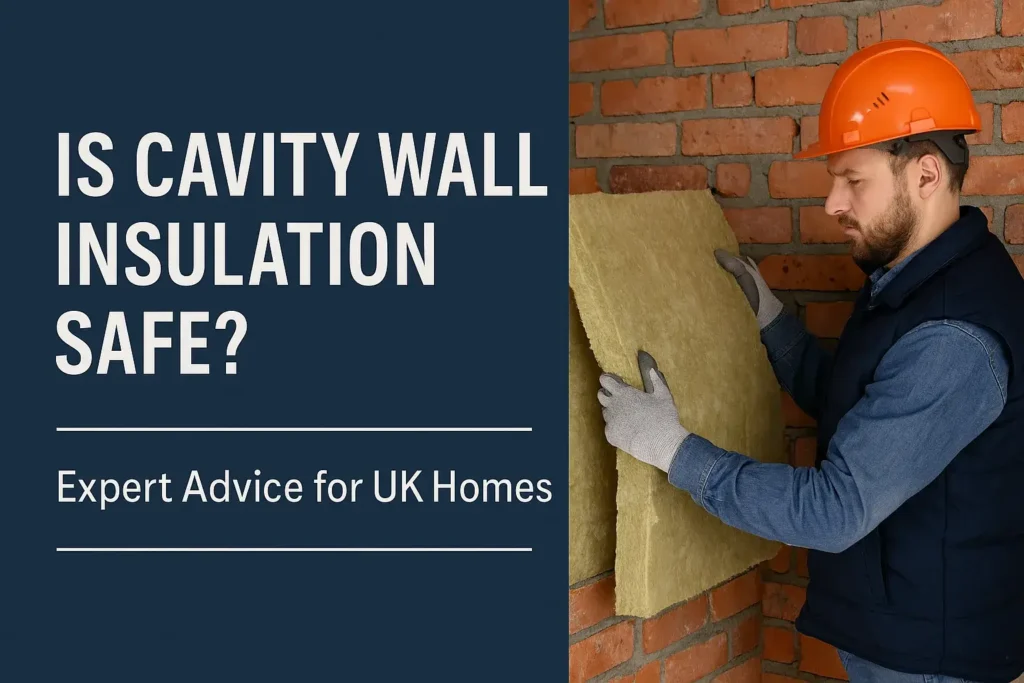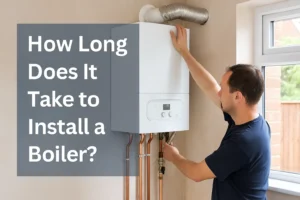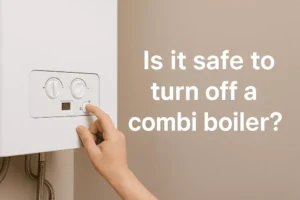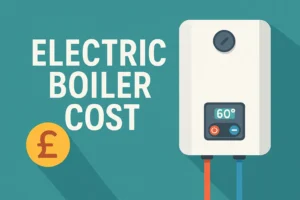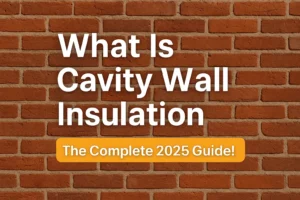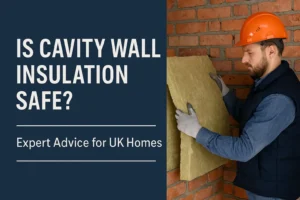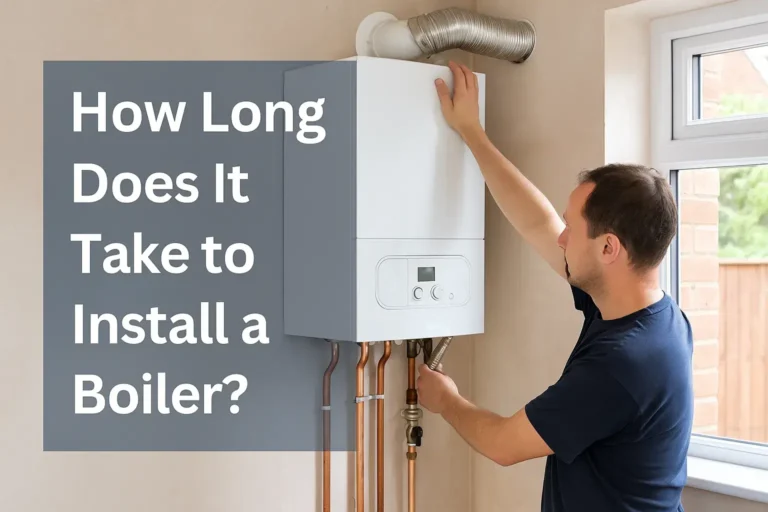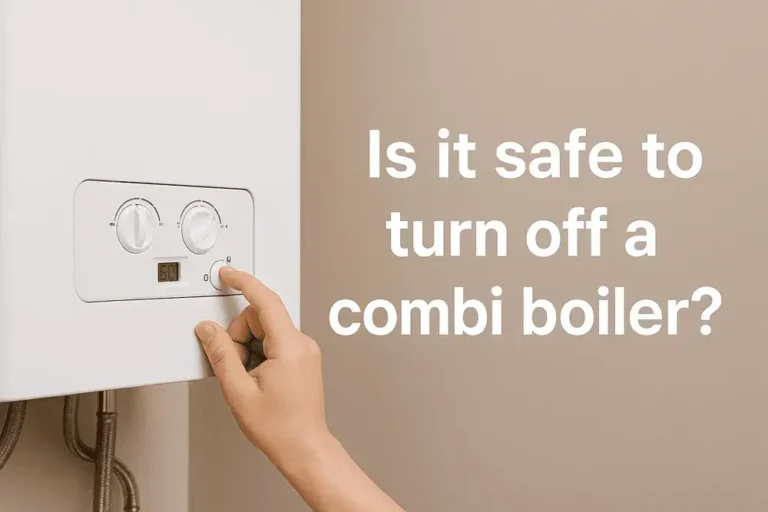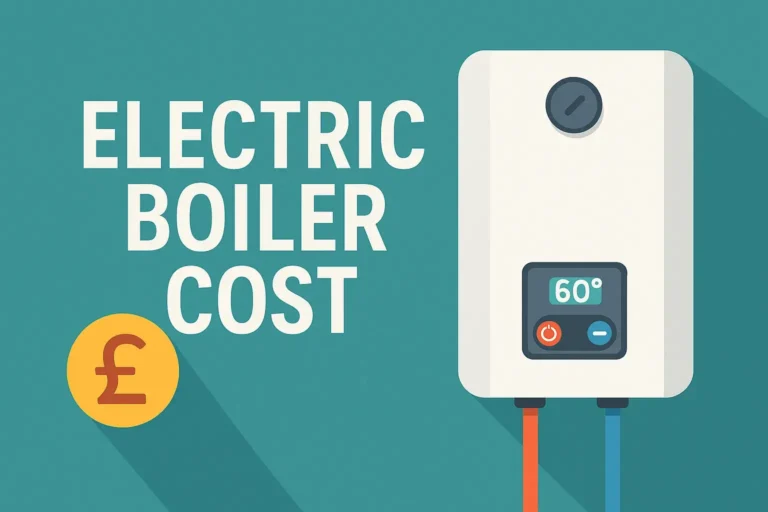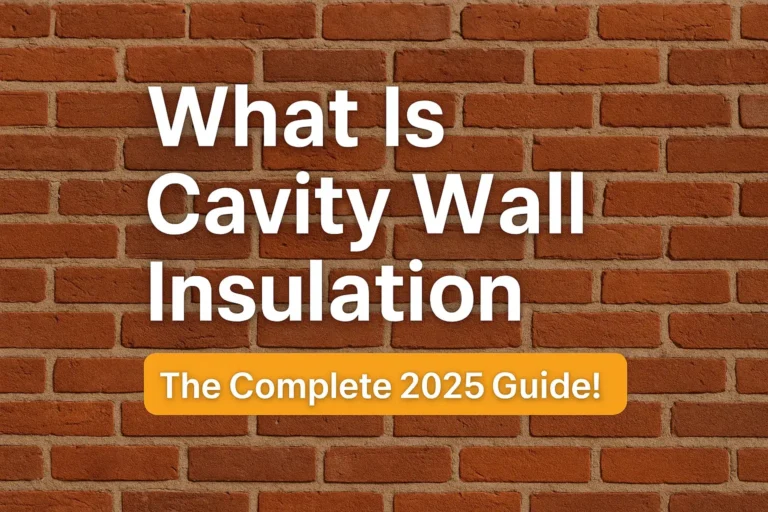Cavity wall insulation has become one of the most popular ways to improve home energy efficiency in the UK. By filling the gap between external walls, it helps reduce heat loss, lowers energy bills, and makes homes more comfortable year-round. But many homeowners still ask: Is cavity wall insulation actually safe?
Table of Contents
ToggleThe short answer is yes – when installed correctly and in the right type of property, cavity wall insulation is safe, effective, and cost-saving. However, safety depends on several key factors, including property type, wall condition, exposure to weather, and installation quality.
In this blog, we’ll explain what makes cavity wall insulation safe, what risks exist, how to avoid problems like damp or mould, and how to determine if your home is suitable.
What Is Cavity Wall Insulation?
Cavity wall insulation is a method of improving a home’s energy efficiency by filling the gap or “cavity” between a building’s inner and outer walls with insulating material. This cavity was originally designed to reduce moisture transfer, but when filled correctly, it also helps to significantly reduce heat loss.
🔍 How does it work?
In most UK homes built after the 1920s, walls were constructed in two layers (or “wythes”) with a gap in between. This air gap can be filled with materials such as:
- Mineral wool – Soft, breathable, and fire-resistant
- Polystyrene beads – Lightweight and water-resistant
- UF foam – Expands to seal every gap
- Sheep’s wool – A natural, eco-friendly alternative
Once installed, these materials act as a thermal barrier. They slow down the escape of heat from your home in winter and reduce unwanted heat gain in the summer. The result is a warmer, more energy-efficient home and reduced heating bills.
💡 Curious about the science behind it? Read our detailed guide on how cavity wall insulation works.
Is Cavity Wall Insulation Safe?
The question at the heart of this guide is: is cavity wall insulation safe for your home? The good news is that for most UK properties, cavity wall insulation is perfectly safe when installed properly, using the right materials, and in the right conditions.
However, not every home is suitable, and poor installation can lead to problems like damp, mould, and cold bridging. That’s why understanding the risks and how to mitigate them is crucial.
When Cavity Wall Insulation Is Safe
Cavity wall insulation is generally safe and beneficial when:
- The property was built after 1920 and has cavity walls of at least 50mm
- The external walls are in good condition (no cracks, gaps, or damage)
- The home is not exposed to high levels of wind-driven rain
- A proper survey and damp inspection have been carried out
- It is installed by a TrustMark-registered, PAS 2035-compliant installer
- Quality materials like mineral wool or polystyrene beads are used
In these cases, insulation can reduce heat loss by up to 35%, significantly cut your energy bills, and lower your carbon footprint safely and effectively.
When It Can Be Risky
Cavity wall insulation can become problematic if installed in unsuitable properties, such as:
- Homes with damaged brickwork or poor pointing
- Properties in exposed coastal or west-facing locations
- Buildings with very narrow or partially blocked cavities
- Homes with pre-existing damp or moisture issues
- Retrofits done without proper assessment or by unqualified installers
🧱 Many issues linked to insulation like mould and damp are caused not by the insulation itself, but by inappropriate installations or skipping essential prep work.
🛡 Real Safety Comes Down to Assessment & Installation
According to both government standards and thousands of homeowner experiences, the key to safe cavity wall insulation is a proper survey and expert installation. Installers should:
- Perform a borescope survey to check cavity suitability
- Identify any existing damp problems
- Choose materials appropriate for your wall type and climate
- Seal all injection holes carefully after installation
- Provide warranties and post-installation support
When these standards are followed, the risk of issues is extremely low, and the benefits are long-lasting.
Tip: Don’t Let Myths Overshadow the Facts
Negative stories you may read online often stem from cowboy installers, outdated materials, or homes in unsuitable areas. For every horror story, there are hundreds of successful, problem-free installations.
Want to learn more about specific risks? See our deep dive on does cavity wall insulation causes dampness.
What Materials Are Used in Cavity Wall Insulation (and Are They Safe)?
One of the most important factors in determining whether cavity wall insulation is safe is the type of material used. Modern insulation materials are designed to be non-toxic, fire-resistant, and moisture-resistant, ensuring both comfort and safety for your home.
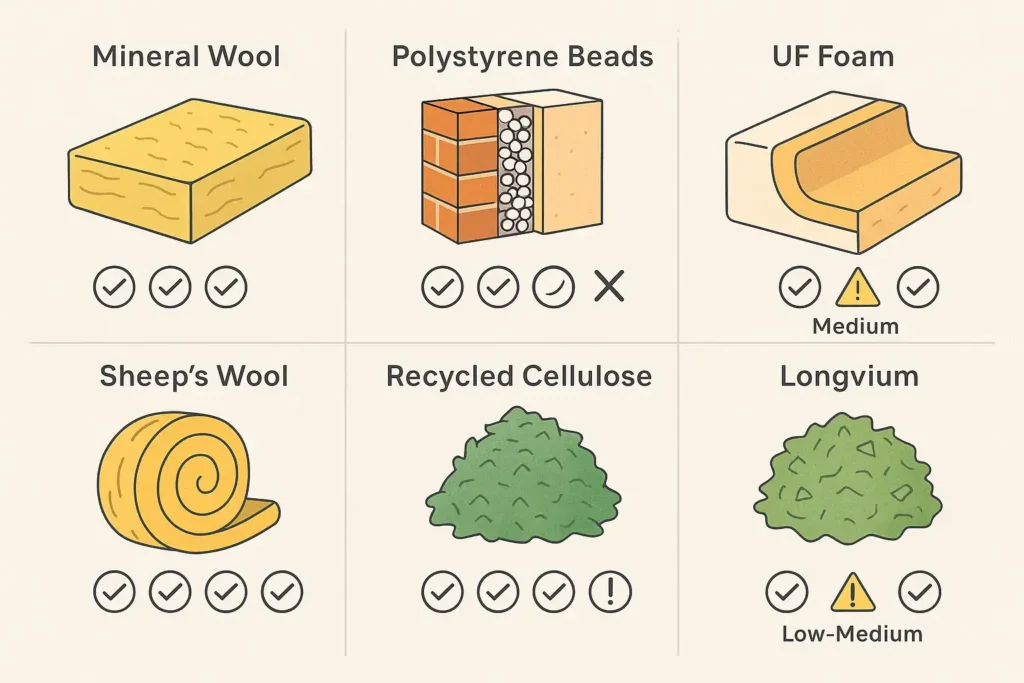
Let’s look at the most common materials used in UK cavity wall insulation and their safety profiles.
🧱 1. Mineral Wool
Also known as rock wool or glass wool, this is one of the most widely used insulation types. It’s made from spun fibres of rock or glass and has the following benefits:
- ✅ Fire-resistant
- ✅ Breathable and water-repellent
- ✅ Non-combustible and long-lasting
- ✅ Resistant to rot, pests, and mould
Safety Rating: ★★★★★
A highly safe, proven material commonly used in both residential and commercial buildings.
🔵 2. Polystyrene Beads (EPS)
Expanded polystyrene beads are small, lightweight pellets that are blown into cavity walls. Once injected, they bond together with a light adhesive.
- ✅ Water-resistant (they don’t absorb moisture)
- ✅ Excellent thermal performance
- ✅ Ideal for uneven cavities
- ❗ Must be carefully sealed to prevent any escape
Safety Rating: ★★★★☆
Very safe when installed properly. A poor seal can lead to minor settling or thermal bridging over time.
🟡 3. Urea-Formaldehyde (UF) Foam
UF foam is a liquid chemical that expands and hardens inside the cavity. While it was common in past decades, it has fallen out of favour due to ageing concerns.
- ✅ Excellent at filling irregular spaces
- ❗ Can degrade over time and lose performance
- ❗ May release formaldehyde if disturbed
Safety Rating: ★★☆☆☆
Only recommended if BBA-approved and used under strict compliance. Many older homes may have legacy UF foam, so how long does cavity wall insulation last? It might be worth exploring if you’re unsure.
🐑 4. Sheep’s Wool
A natural and sustainable option, sheep’s wool insulation is becoming more popular in eco-conscious retrofits.
- ✅ Non-toxic and breathable
- ✅ Naturally resistant to mould and mildew
- ✅ Great acoustic and thermal properties
- ❗ More expensive and less common in cavity applications
Safety Rating: ★★★★★
Safe and eco-friendly, but often used in other parts of the home (e.g. lofts) rather than cavity walls.
♻️ 5. Recycled Materials (e.g. Cellulose)
Some insulation products use recycled newspaper or denim, treated with fire retardants and mould-resistant additives. These are used less frequently in cavities due to settling concerns.
Safety Rating: ★★★☆☆
Eco-friendly but must be installed with care to prevent air gaps or slumping.
| Material | Fire Safety | Moisture Resistance | Breathability | Longevity | Suitability |
|---|---|---|---|---|---|
| Mineral Wool | ✅✅✅ | ✅✅✅ | ✅✅✅ | ✅✅✅ | High |
| Polystyrene Beads | ✅✅ | ✅✅✅ | ❌ | ✅✅ | High |
| UF Foam | ✅ | ❌ | ❌ | ❌ | Medium |
| Sheep’s Wool | ✅✅✅ | ✅✅ | ✅✅✅ | ✅✅ | Medium |
| Recycled Cellulose | ✅✅ | ✅ | ✅ | ❗ Depends | Low–Medium |
Conclusion:
When choosing cavity wall insulation, mineral wool and EPS beads are the safest and most widely recommended materials. Always make sure the product is BBA-approved and that your installer is working under ECO4 or PAS 2035 standards.
When Is Cavity Wall Insulation Unsafe?
While cavity wall insulation is generally safe and beneficial, there are circumstances where it may do more harm than good. Understanding when insulation becomes unsafe is essential before going ahead with any installation.
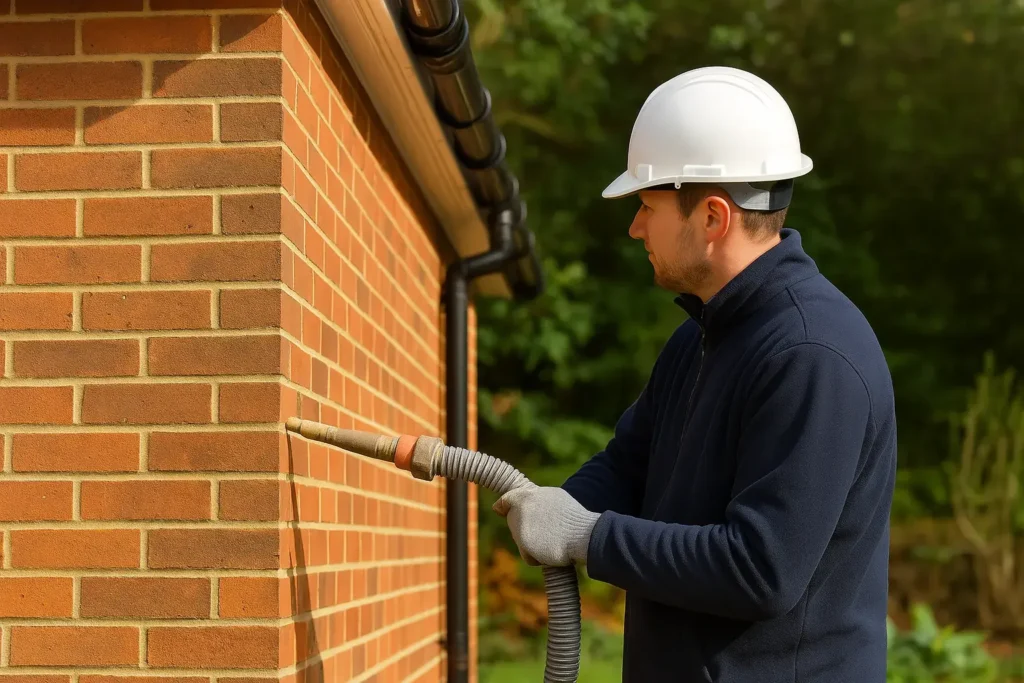
⚠️ Key Situations Where It May Be Unsafe
1. Damp or Damaged External Walls
If your property has cracks, poor pointing, or water damage, insulation can trap moisture inside the cavity, leading to condensation, mould, and even structural damage.
💬 Homeowners often discover issues after installation because no proper damp survey was carried out.
Solution: Always conduct a pre-installation survey to check for structural issues.
2. Homes in Exposed or Coastal Areas
If your property is west-facing or located in a high rainfall zone (like coastal Wales or Scotland), your walls may be subject to wind-driven rain. This moisture can penetrate brickwork and soak the insulation inside the cavity, especially if materials like UF foam or mineral wool are used without proper treatment.
“We live near the sea and were told cavity insulation could increase damp risk so we avoided it.” – Reddit user u/beachyfeet
Solution: Consider external wall insulation or breathable internal solutions instead.
3. Very Narrow or Incomplete Cavities
Older homes (especially pre-1930s) may have very narrow cavities, sometimes just 25–30m,m making them unsuitable for blown-in insulation.
- Narrow cavities don’t provide enough space for insulation to function effectively
- They are prone to cold bridging, where heat escapes through uninsulated gaps
Solution: If the cavity is too small, insulation may be unsafe. How can I tell if I have cavity wall insulation? It will help you assess your wall type.
4. Blocked or Debris-Filled Cavities
Sometimes the cavity is already obstructed with mortar snots or rubble, which prevents insulation from filling evenly. This can lead to patchy performance and moisture risks.
Solution: A borescope inspection is essential to check the cavity condition before any work begins.
5. Cowboy Installers & No Guarantees
A major safety risk comes from unqualified installers rushing the job, using poor materials, or skipping assessments. These are the roots of most horror stories you’ll find online.
“Insulation was rushed by a firm years ago. Now we’re dealing with black mould and no way to contact the company they vanished.” Reddit user MapTough848
Solution: Use only PAS 2035-compliant, TrustMark-registered installers who offer proper warranties.
🛑 Summary: Red Flags That Make Insulation Unsafe
- ❌ No pre-installation survey
- ❌ Signs of damp, cracks, or structural damage
- ❌ Homes exposed to high rainfall without weather shielding
- ❌ Narrow cavities (<50mm)
- ❌ Unqualified or uninsured installers
When any of the above apply, cavity wall insulation should be avoided or replaced with alternative solutions.
Check If You Qualify for Free Cavity Wall Insulation
Insulating your walls the right way starts with a proper assessment. If you’re unsure whether your home is suitable, simply fill in the form below our team will carry out a free cavity wall suitability check and let you know if you qualify for government-funded insulation under the ECO4 or GBIS schemes.
Check If You Qualify For FREE Cavity Wall Insulation
How to Ensure a Safe Installation
To make cavity wall insulation safe and effective, proper planning and professional standards are essential. Here’s what to look for:
1. Get a Proper Home Survey
A certified installer should assess:
- Cavity depth and condition (using a borescope)
- Signs of damp or cracks in external walls
- Exposure to wind-driven rain
- Your home’s EPC rating and insulation needs
2. Use a TrustMark & PAS 2035 Installer
Only choose companies that are:
- TrustMark registered
- PAS 2030/PAS 2035 compliant
- Able to provide full warranties and documentation
This ensures your home is assessed and upgraded following strict government-backed standards.
3. Insist on Approved Materials
Only BBA-certified products like mineral wool or EPS beads should be used. These are tested for safety, moisture resistance, and long-term performance.
4. Get Post-Install Proof
After the job, you should receive:
- Completion certificate
- Warranty (usually 10–25 years)
- TrustMark data lodgement reference
💡 Pro Tip:
If your installer doesn’t check for damp or cavity debris, walk away.
Frequently Asked Questions
What is the downside to cavity wall insulation?
The main downside is the risk of damp if insulation is installed in homes with cracked walls, poor pointing, or exposure to wind-driven rain. It can also lead to cold spots or mould if the cavity isn’t fully cleared or filled properly. These issues are usually caused by poor assessment or substandard installation.
When should you not have cavity wall insulation?
You should avoid cavity wall insulation if your property has existing damp, narrow or blocked cavities, damaged brickwork, or is in a high-exposure coastal or west-facing location. In these cases, insulation can trap moisture and lead to internal damage.
Why is cavity wall insulation being removed?
Cavity wall insulation is typically removed when it causes problems like damp or mould due to poor installation or being fitted in an unsuitable property. It may also be taken out if the material has degraded over time or if a homeowner wants to replace it with a more effective or modern alternative.
Final Verdict: Is Cavity Wall Insulation Safe?
Yes, cavity wall insulation is safe for most UK homes when it’s done right. The key is ensuring:
- Your property is suitable (no damp, cracks, or extreme exposure)
- A full assessment is carried out by qualified professionals
- Only BBA-approved materials are used
- The work is installed by a TrustMark-registered, PAS 2035-compliant installer
When these conditions are met, cavity wall insulation can make your home warmer, reduce energy bills, and boost energy efficiency without causing problems.
However, if corners are cut or your home isn’t assessed properly, it can lead to damp, mould, or costly repairs. That’s why a proper suitability check is essential before moving forward.
🏠 Ready to find out if your home qualifies?
Fill in the quick form above and let our experts take care of the rest.

